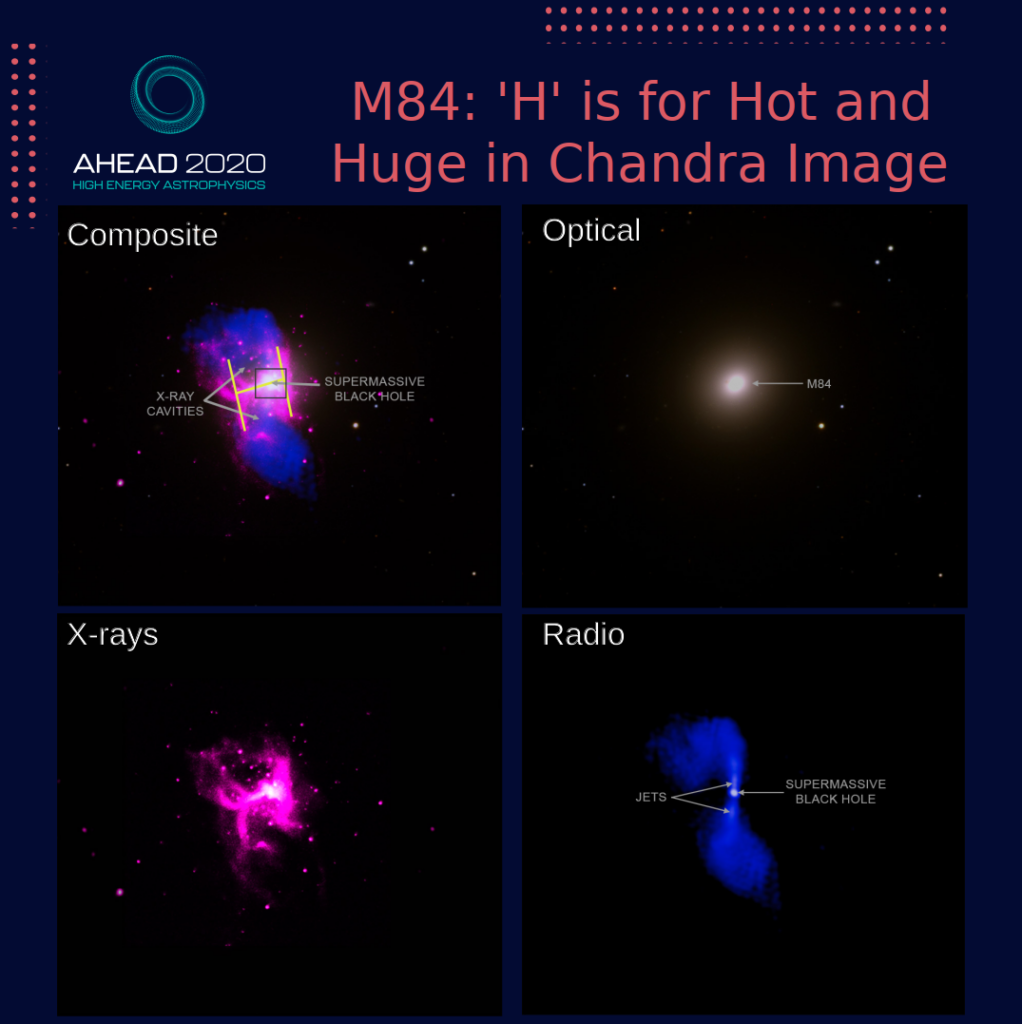Astronomers have mapped the hot gas — using X-ray data from Chandra — down to only about 100 light-years from the black hole in the center of the M84 galaxy. A radio image from the VLA reveals jets streaking away from the black hole, while optical data from the SDSS show M84 and neighboring galaxies. The jets from the black hole have pushed out holes, or cavities, in the hot gas surrounding the black hole creating an “H”-shaped structure. This result contributes to the understanding of how black holes pull in and ingest material and the role that jets play in this process.

Researchers studying M84 with Chandra and the VLA found that the jets may influence the flow of the hot gas towards the black hole even more than the gravitational pull from the black hole. For example, the team estimates matter is falling towards the black hole from the north — along the direction of the jet seen in radio waves — at about 500 times the mass of the Earth every year, a rate that is only a quarter of that from directions where the jet is not pointing, to the east and west. One possibility is that gas is lifted along the direction of the jet by the cavities, slowing the rate at which gas falls onto the black hole.
M84 is a cousin of Messier 87 (M87), the galaxy containing the first black hole imaged with the global Event Horizon Telescope network, and, like M87, is also a member of the Virgo Cluster. The supermassive black hole in M84, along with those in our galaxy, M87, NGC 3115, and NGC 1600, are the only ones close enough to Earth, or massive enough, for astronomers to see details in Chandra images which are so near the black hole that gas should be falling inwards. Like the black hole in M87, the one in M84 is producing a jet of particles; however, the point source of X-rays from material even closer to the black hole is over ten times fainter for M84. This allows more detailed study of gas falling towards the black hole in M84 that is farther out, preventing the faint X-rays produced by this gas from being overwhelmed by the X-ray glare from the point source.
The results are presented in a paper entitled: “AGN Feeding and Feedback in M84: From Kiloparsec Scales to the Bondi Radius” led by C. J. Bambic (Princeton University). Other authors include Helen Russell (University of Nottingham, United Kingdom), Christopher Reynolds (Institute of Astronomy, Cambridge, UK; University of Maryland, College Park), Andy Fabian (Institute of Astronomy), Brian McNamara (University of Waterloo, Canada; Waterloo Centre for Astrophysics, Canada), and Paul Nulsen (Center for Astrophysics | Harvard & Smithsonian).
Source: Chandra.harvard.edu
